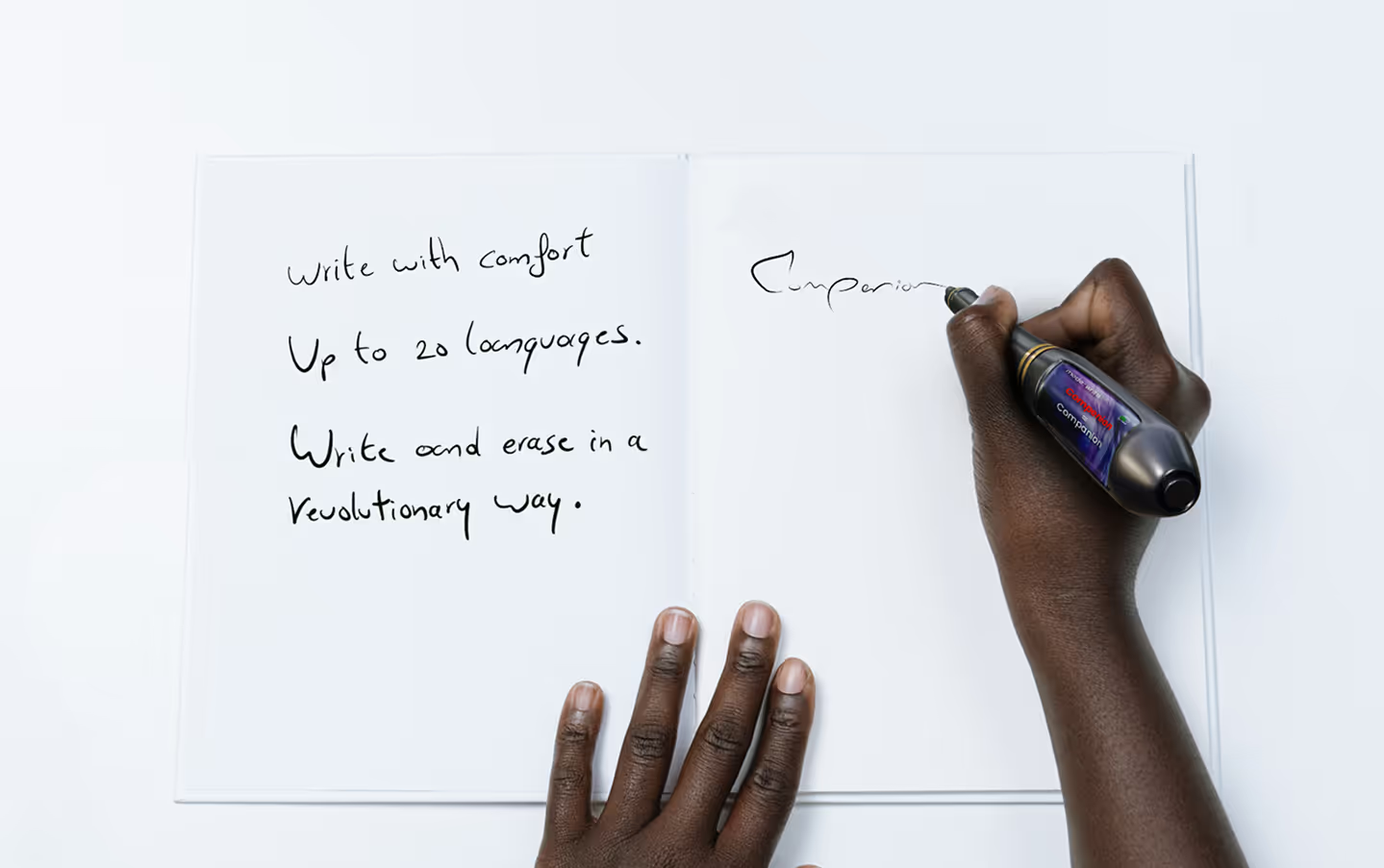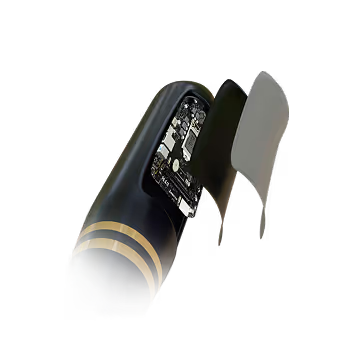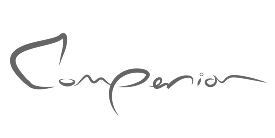

Compenion is an innovative writing companion — a smart pen designed to help people write more confidently.
Whether it’s children learning to write, students practicing spelling, or professionals drafting precise text,
Compenion acts as a supportive tool that bridges technology and human learning.
Developed as a group project in my final year, I was responsible for the full product design and visualization,
including 3D modeling in Blender, interface design, and front-end implementation in HTML and CSS.
A human approach to intelligent correction
The challenge was to create a tool that supports, not corrects — something that teaches users through experience rather than error alerts. Compenion uses built-in motion sensors and AI handwriting analysis to recognize when a word is written incorrectly.
When an error is detected, the pen gently vibrates, giving the user instant feedback while maintaining the natural flow of writing.
This combination of tactile response and intelligent detection makes learning more intuitive, accessible, and engaging.


A smarter way to learn — where design, motion, and AI write together.


I took on the entire 3D product design, modeling every detail to feel ergonomic, elegant, and realistic.
The design language blends simplicity with function — smooth surfaces, balanced proportions, and an integrated digital display that provides contextual guidance.
Beyond visuals, I contributed to the front-end prototype, translating the concept into an interactive interface built with HTML and CSS.
This allowed the pen’s feedback logic and user interactions to be demonstrated visually and functionally during the presentation phase.

I took on the entire 3D product design, modeling every detail to feel ergonomic, elegant, and realistic. The design language blends simplicity with function — smooth surfaces, balanced proportions, and an integrated digital display that provides contextual guidance.
Beyond visuals, I contributed to the front-end prototype, translating the concept into an interactive interface built with HTML and CSS. This allowed the pen’s feedback logic and user interactions to be demonstrated visually and functionally during the presentation phase.
Designing empathy into technology
Compenion’s purpose extends beyond correction — it’s about confidence and independence.
It empowers users to improve through subtle guidance instead of punishment,
making learning less intimidating and more human.
By combining AI precision with thoughtful design, the product embodies how intelligent tools can support growth and accessibility in everyday life.
Compenion’s purpose extends beyond correction — it’s about confidence and independence.
It empowers users to improve through subtle guidance instead of punishment,
making learning less intimidating and more human.
By combining AI precision with thoughtful design, the product embodies how intelligent tools can support growth and accessibility in everyday life.


Compenion redefines how we learn — turning technology into a quiet mentor rather than a loud instructor.
It bridges the gap between analog and digital learning, helping users gain confidence with every stroke. By pairing smart technology with thoughtful design, it proves that innovation doesn’t need to feel complex to be powerful.
Compenion stands as a symbol of how AI can guide, not replace — assist, not interrupt. It’s a product designed not just to correct mistakes, but to celebrate progress, one word at a time.

to some of the most common questions about my work, process, and approach.
No long reads — just clear insights to help you understand how I design, create, and collaborate.
I mainly work on web design, UX/UI, graphic design, and social content. Whether it’s a full rebrand, a new website, or designing branded visuals, I make sure every project strengthens the brand and adds real value.
I follow my 4-step approach: What, Why, How, When. This keeps every project structured and clear. We start by defining the goals, dig into the purpose, shape the strategy and planning, and then deliver step by step.
It depends on the scope. Smaller projects like a logo or business cards can take a few weeks. Larger projects such as a full website or rebrand usually take a few months. I always set clear deadlines and milestones upfront.
Absolutely! I love helping emerging brands and small businesses grow with fresh, scalable design solutions that fit their budget and goals.
I test and optimize using methods like usability testing and A/B testing. That way, design choices aren’t just visually appealing — they’re also proven to be effective.
Yes! I create branded visuals and templates that make your social channels look consistent and professional. While I don’t always handle ongoing management, I’ll deliver everything you need to keep your feeds looking fresh.I test and optimize using methods like usability testing and A/B testing. That way, design choices aren’t just visually appealing — they’re also proven to be effective.
%20Medium.avif)
Open
%402x%20(1).svg)